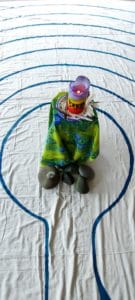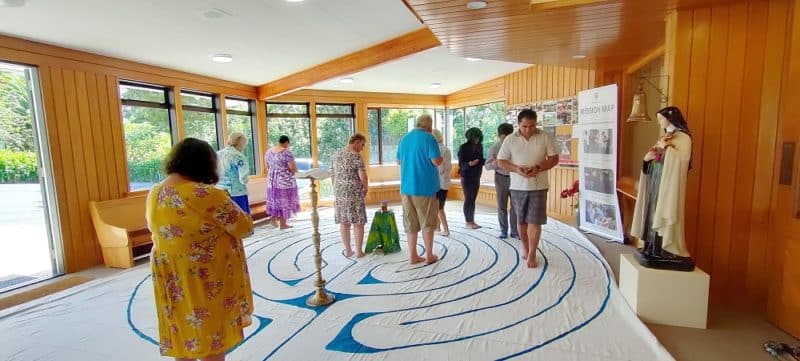Parishioners from St Joseph’s Kaitaia have walked an ancient path as a Lenten exercise.
Wiga Autet, faith formation coordinator for Northland, was invited to support the Lenten programme at Kaitaia — and she opted for a reflective and contemplative format.

At the centre of the labyrinth
This took the form of praying and meditating, while journeying on a labyrinth, made by Mrs Autet.
“We have embarked on a four-session journey: Come as you are: Prayer walking with Jesus.”
In one exercise, parishioner-pilgrims brought their “burdens” (symbolised by a rock/stone) and “let them go” in the centre of the labyrinth.
They picked up a light weight (a feather) because Jesus said: “Come to me, all you that are weary and carrying heavy burdens, and I will give you rest. . . . For my yoke is easy, and my burden is light.” (Matthew 11:28,30)
Another exercise will involve travelling “the Camino/The Way”.
Mrs Autet crafted and painted the portable “7-circuit” labyrinth herself.
She pointed out that, unlike a maze, which has multiple paths from which choices must be made, a labyrinth has a single path that winds its way to the centre. The same path leads the walker back out.
Mrs Autet said that the origins of the labyrinths made by humans are lost in the mists of time, but are believed to be around 4000BC. Some of the earliest forms of labyrinths are found in Greece, dating back to 2500-2000BC, and the most well-known Christian labyrinth is probably at Chartres Cathedral near Paris, France, built in 1200AD.

Reader Interactions